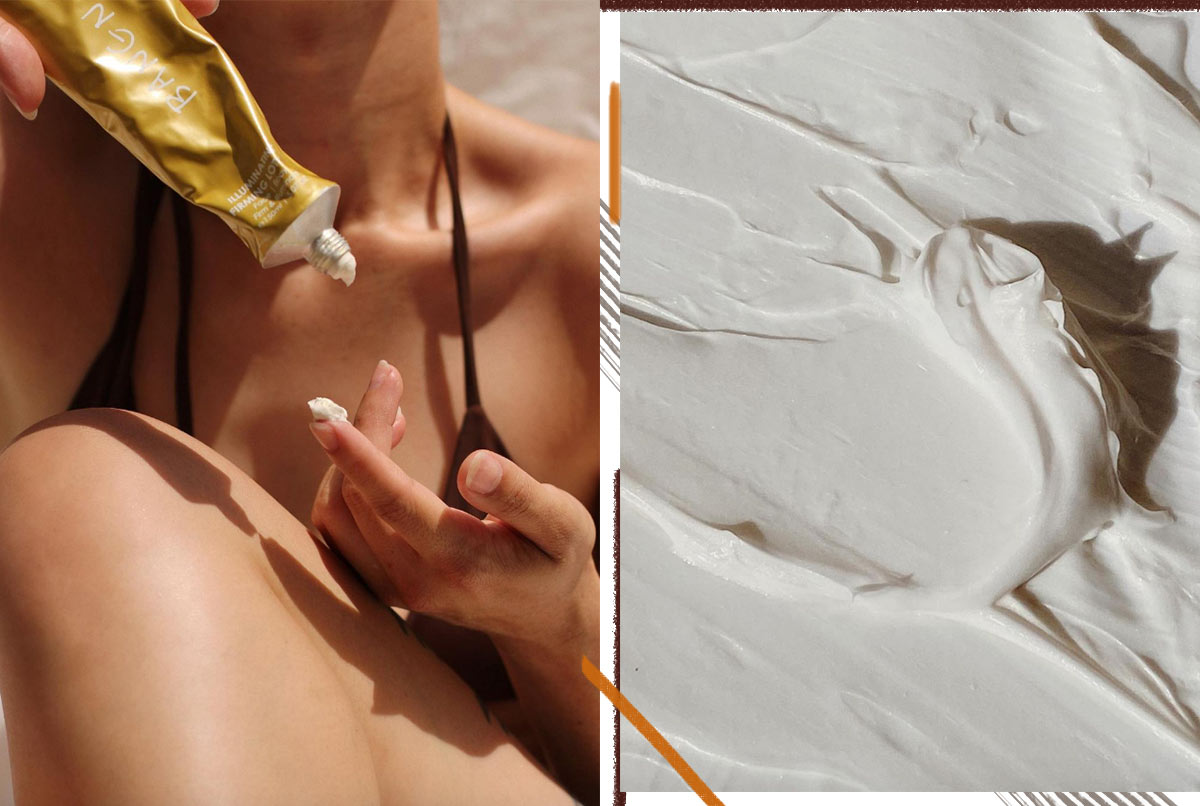Applying body lotion is one of the most luxurious rituals in our beauty routine. There’s something about massaging the skin and letting the lotion sink in that feels like the height of self-care! However, body cream also has important benefits when it comes to keeping your skin soft, strong, and resistant to external damage. When you keep your body well-moisturized, you can avoid dreaded dry patches, irritation, or itchiness, even during the worst of the winter months.
The method you use to apply your body lotion also makes a difference! While there isn’t a wrong way to use body cream, some methods are better than others. We’ve put together this guide with some important tips and tricks to help you use body lotion and keep your skin happy. We also answer some important questions, like when and how often to moisturize the body, how much to use, and more.
In this article:
- How to Apply Body Lotion
- When Should You Use Body Cream?
- How Often Should You Use Body Lotion?
- How Much Body Cream Should You Use?
- Do You Wash off Body Lotion?
- Can You Use Body Cream on Your Face?
How to Apply Body Lotion
Take the lotion and rub it on the skin… sounds simple, no? While applying body lotion can be straightforward, we still have some tips that will help you optimize the process.
- If you’ve just gotten out of the shower, don’t towel-dry your skin completely. Instead, use the towel to gently pat off the excess moisture, but your skin should still be slightly damp. This will help the moisturizer absorb more quickly.
- To start, dispense a small amount of body lotion in the palm of your hand. Usually, a quarter-sized amount will do per body part.
- It’s up to you which body part you start with, but it’s important to go in order. You can start with the legs, the arms, or your torso and then work your way either inwards or upwards.
- In smooth, circular motions, massage your body cream into your skin, slowly working it in over each limb. Work in sections, and focus on getting each limb or body part covered.
- The body cream should sink into your skin as you massage it, leaving it feeling moist but not like it’s slathered in product.
- Dispense more body moisturizer as needed until your entire body is covered.
When Should You Use Body Cream?
There is no such thing as a bad time to use body cream, but there are times when it can be especially beneficial.

After a Shower or Bath
As any skincare fanatic will tell you, the best time to use body cream is immediately after you’ve showered. During the shower, water permeates into our skin, so it’s the time when it’s most hydrated.
However, the second you get out of the shower, that water begins to evaporate. Once it’s all gone, your skin is going to be even more dehydrated than it was before the shower since the very act of showering strips your body’s protective oils.
By applying body moisturizer immediately after a shower, you replenish the fatty acids that your body has lost while also locking in that precious moisture.
Right Before Bed
If you often wake up with dry skin, then get in the habit of also applying body moisturizer before bed. When we sleep, it’s easy to lose moisture, especially if the air is dry. Sleeping with body cream on will keep you nourished through the night.
If you have already moisturized after the shower, you may just want to apply body cream to the parts of your body that are more prone to dryness, like the hands, elbows, or feet.
Before Facing the Elements
On very windy or cold days, it’s a good idea to use body cream before you leave the house (although give it enough time to sink in, so you don’t feel damp). The wind and cold can end up chapping the skin, but a thick body cream or body butter can help protect from damage.
Read Next: How to Choose the Right Body Moisturizer for Your Skin Type
This is especially useful if you like to participate in activities like winter hiking or skiing, which can be surprisingly harsh on the skin. You might not need to use it all over your body but at least on the parts that are going to be exposed to the harsh elements.
If your skin is also going to be exposed to sunlight, then kill two birds with one stone by using a moisturizing sunscreen. Keeping your skin moist is important, but keeping it protected from the sun is mandatory.
After Washing Your Hands
Nowadays, many of us are washing our hands much more often than we used to, and for longer than usual. As a result, the skin on our hands can get especially dry and even cracked. While you might want to use a dedicated hand cream, a body cream can also work just fine to nourish your hands. Keep a bottle of cream next to your sink, so you moisturize immediately after you wash your hands and prevent those ill effects.
When Your Skin Needs TLC
Simply put, you should apply body cream every time your skin seems like it needs it! If it looks dry, apply some cream. If you’ve been sunburned, use some soothing body cream to help calm the burn. If it’s gotten chapped from windburn… you get the point. Keeping the skin moisturized after it’s been slightly damaged helps to speed up its repair.
How Often Should You Use Body Lotion?
There are no set rules as to how often you should use body lotion. In general, you should use it as often as necessary, which means every time that your skin feels dry and dehydrated.
You should also use it at times when your skin is at risk of becoming dehydrated, like after a shower or if you’ve spent too much time in the sun. Since most people shower once a day, that means you’ll also want to moisturize at least once a day.
Read Next: Body Cream vs. Body Lotion vs. Body Butter & Oil
If you’re the kind of person who showers twice a day, then moisturizing twice a day is essential to keeping your skin healthy and strong. On the other hand, if you find that you don’t need a daily shower, moisturizing just every other day or two might be enough for your skin.
How Much Body Cream Should You Use?
The amount of body cream you use depends on a few factors, like how rich or spreadable your body cream is or how much lotion your skin absorbs. While we do recommend using a quarter-sized amount of cream per limb or body part, it’s a general guideline. You might need less or you might need more.

The best way to determine how much body moisturizer to use is to see how much of it sinks into your skin and how good it feels. If your skin seems to absorb the lotion instantly, you might want to add a second layer or switch to a richer cream. On the other hand, if you feel like it takes you ages to rub the moisturizer into your skin, you might want to use a smaller amount or switch to a lighter lotion formula.
Do You Wash off Body Lotion?
No! Body lotions and body creams are meant to stay on your skin, where they can keep it moisturized and reinforce its barrier layer. You should apply your moisturizer after a shower and then leave it on.
The only exception would be a cleansing body lotion or a creamy soap. However, those kinds of products are usually marketed as cleansers and not as lotions. If a product is marketed as lotion, chances are it’s a leave-on product.
Can You Use Body Cream on Your Face?
It depends. Whether you can use a body cream on your face strongly depends on your facial skin type and the specific body cream you have. Some brands, like CeraVe, are known for making fragrance-free, non-comedogenic moisturizers for both the face and body, in which case, there’s absolutely no problem using the same cream from head to toe.
However, this isn’t true for all brands or all body creams. There are two formulation factors that can make using body cream on the face problematic.
Consider the Fragrance
First of all, most body creams are made with a higher percentage of fragrances or essential oils when compared to face moisturizers. The skin on the body is thicker and heartier, so it can generally handle the extra fragrance, but it can be quite irritating for the face, especially if you have sensitive skin. Because of this, it’s important to be cautious, although keep in mind that reactions to fragrance are very individual.
Consider Comedogenicity
The second factor to consider is comedogenicity (i.e., the likelihood that a product will cause acne). When formulating body creams, chemists rarely consider whether the ingredients are comedogenic at all. That’s why many body creams are formulated with rich emollients like wheat germ oil or cocoa butter.
While these oils are deeply moisturizing, they are also very likely to cause breakouts in acne-prone skin. If your skin is very dry, you might be able to use a body cream on your face, but if you have acne-prone skin, you’ll need to exercise more caution.
Photos via @bangn.body, Instagram





